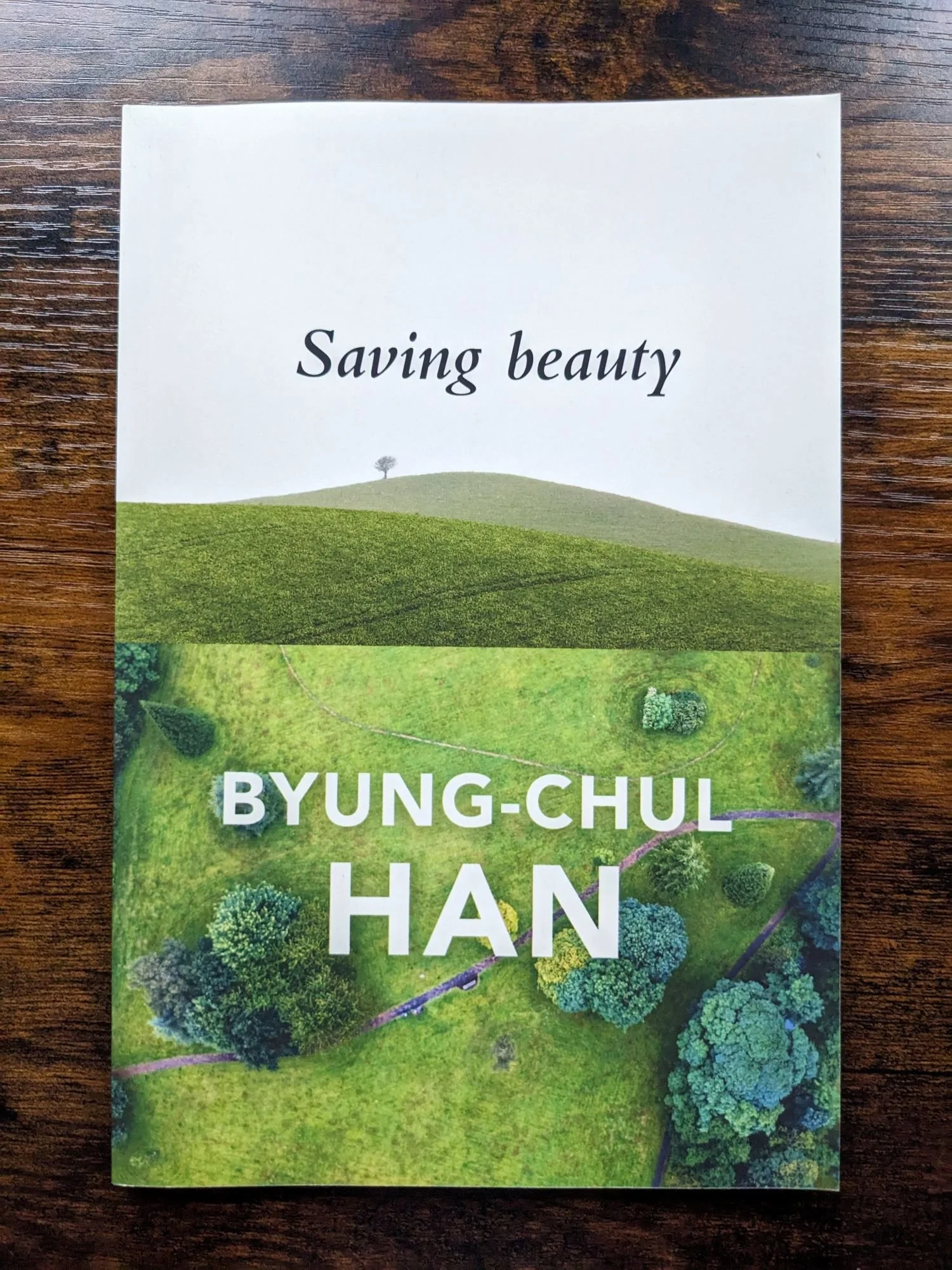Enemy of the Smooth
Byung-Chul Han's "Saving Beauty"
I want to return to processing some of this philosopher’s work I’ve recently fallen into, Byung-Chul Han. At this point, I’m picking up some themes, and so it might be helpful to have the other two close:
Saving Beauty
What struck me as unique to this book, Saving Beauty, apart from the immediate idea that beauty is something needing saving, was Han’s notion of “the smooth” which seems to counter, or at least relate to, his notions of Negativity and Positivity. He makes a heated and comical attack at the art of Jeff Koons right from the opening, but I think it is this moment and a second that help me comprehend his Negativity and Positivity that have appeared in the works before.
“Jeff Koons says that an observer of his works should only emit a simple ‘Wow’. It seems that his art does not require any judgement, interpretation or hermeneutics, no reflection or thought. It intentionally remains infantile, banal, imperturbably relaxed, disarming and disburdening…It invites the observer to take an attitude without distance, to touch. An aesthetic judgement, however, presupposes a contemplative distance. The art of the smooth abolishes such distance” (2-3).
“Without the negativity of being refracted, beauty atrophies into the smooth…Without the negativity of death, life solidifies into something dead. It is smoothed out into the undead. Negativity is the invigorating force of life” (45).
Negativity works in the way of replacing things. It is not additive and thus not a part of the acceleration that drives modern life. Positivity is the additive element of things. In this book, his issue is with the smoothing of things, namely beauty.
From here, I see the return of his wish for more contemplative habits in daily life such that there is a pause and distinct ‘in-between times’ of moments in life. That idea progresses here to include beauty. Beauty is, in part, something that brings one to linger and contemplate:
“Consumption and beauty are mutually exclusive. Beauty does not promote itself. It does not tempt you to enjoy or to possess it. Rather, it invites you to linger in contemplation” (56).
“The task of a writer is to metaphorize, that is to poeticize, the world. The writer’s poetic perspective discovers the hidden liaisons between things. Beauty is a relational event” (75).
Attempting to pull from the previous letter on The Scent of Time, contemplation is the key activity that helps slow things down to actually experience them in a meaningful way. Beauty, now, is almost a site of where contemplation and slowness can occur.
“The things only unveil their hidden beauty, their fragrant essence, belatedly via detours. Long-lasting and slow: that is the pace of beauty. One does not happen across beauty in an immediate encounter. Rather, it occurs in the form of a renewed encounter and a re-cognition” (76).
I won’t move toward what he says will save beauty, but I can understand how his motions are true here. The takeaway I’m finding is the notion of “the smooth”. And it’s not unfound. It brings to mind the instagram account named Celebface, an account entirely dedicated to how celebrities will physically or aesthetically modify their appearance all toward the same kind of face. It’s quite shocking, frankly. It also recalls an essay about the “Instagram face”. This, to me, is “the smooth”. Any natural or unique feature of someone’s face is sanded down until appearing as the common denominator of physical appearance.
This is not dissimilar to what I experienced recently with “the lux,” I’m sure, and the removal of others and any potential-future pain.
The task, then, would be to appreciate, in contemplation of course, things that do not fit the smooth sense of life and carry forward their uniqueness, their truth, by way of their “flaws”.
More soon,
Trevor
Now-reading affiliate links:
